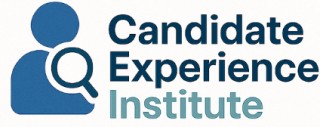
The Importance of Situational Assessment
Recognizing the Value of Situational Assessment
In the realm of candidate experience, situational assessment plays a pivotal role. It's not just about evaluating a candidate's skills or qualifications; it's about understanding how they perform in real-world scenarios. This type of assessment helps employers gauge human performance in various job settings, ensuring that individuals are not only technically proficient but also adaptable to the specific demands of the role.
Employers often use situational assessments to simulate job-related challenges, providing a glimpse into how a candidate might handle actual work situations. This approach is particularly beneficial in industries where decision-making and problem-solving are crucial. By engaging stakeholders in the assessment process, organizations can better tailor their evaluations to reflect the realities of the job, leading to more informed hiring decisions.
Furthermore, situational assessments contribute to a more transparent and equitable recruitment process. By focusing on real-life scenarios, these assessments reduce biases that might arise from traditional interview methods. They offer a level playing field where candidates can demonstrate their capabilities in a practical context, aligning with the principles of public participation and fair assessment practices.
For those looking to enhance their candidate experience strategy, understanding the depth of situational assessment is crucial. It's not just a test; it's a comprehensive evaluation that considers the individual's ability to navigate complex situations, engage with external stakeholders, and make informed decisions under pressure. To delve deeper into crafting effective job ads that attract top talent, you might find this resource insightful.
Key Elements of Effective Situational Assessment
Core Components for Successful Situational Assessments
Situational assessment is pivotal in shaping the landscape of candidate experience. Understanding its key elements can significantly influence the overall effectiveness of this practice in various job settings. Let's delve into some fundamental components that contribute to an effective situational assessment process.- Comprehensive Job Analysis: A thorough job analysis lays the groundwork for any situational assessment by identifying the specific demands and expectations of the job. This involves examining work settings, understanding human performance, and determining the skills necessary for a candidate to succeed.
- Engagement of Stakeholders: It’s crucial to have internal and external stakeholders engaged in the situation assessment process. This collective input ensures that assessments are aligned with the organization's goals and the wider public's needs, enhancing decision-making practices.
- Public Participation: Including a level of public participation or input, especially in sectors where community involvement is crucial, ensures transparency and adds value to the process. Public engagement also aids in identifying problem opportunities that might not be visible to those within the organization.
- Performance-Based Assessments: Employing performance-oriented situational tests enables a clearer evaluation of how a candidate might handle real-world situations. This can sometimes be a better predictor of future job performance than traditional assessment measures.
- Reliability and Validity: Ensuring that the assessment tools used are both reliable and valid guarantees that the measurements are accurate and consistent, promoting fairness and objectivity in the candidate evaluation process.
- Effective Resource Allocation: Human and material resources need to be appropriately allocated to support the assessment and decision processes. This enhances the efficiency of the assignment and ensures that the participation process adds value rather than becoming a burden on resources.
Challenges in Implementing Situational Assessment
Identifying and Overcoming Obstacles in Situational Assessments
Implementing situational assessments as part of the candidate selection process presents distinct challenges that stakeholders often confront. Understanding these hurdles is critical to ensuring that assessments effectively measure candidates' human performance and decision-making abilities in real-world work settings. One significant obstacle arises from the inherently variable nature of the assessments themselves. Because situational assessments are designed to simulate job-related challenges, ensuring they accurately capture the complexities of a particular role requires extensive job analysis and collaboration among external stakeholders. This means crafting scenarios that are valid across various group settings and align with national and international standards. Consistency and fairness across different candidates also demand careful attention. Another challenge is the resource-intensive nature of these assessments. Developing scenarios, conducting trials, and selecting appropriate level tasks often necessitate significant upfront investment in terms of time, expertise, and financial resources. Moreover, it can be challenging to engage the appropriate stakeholders—such as level public participation and internal decision-makers—who can provide insights that lead to fair and equitable assessments. Additionally, maintaining the validity and reliability of situational assessments involves continuous practice and enhancement. Difficulties arise especially when integrating new technologies or when there's a need to tailor assessments for public or private sector roles. As assessments evolve, ensuring that they continue to evaluate both the decision process and human performance accurately becomes an ongoing task. Support from digital tools and technologies has eased some of these burdens by facilitating the sharing of information and streamlining the assignment and evaluation processes. However, stakeholders must remain vigilant to avoid over-reliance on technology that could oversimplify complex human interactions. Moreover, ensuring stakeholder engagement throughout the assessment process can present challenges. Stakeholders engaged in developing situational assessments should have clear roles and responsibilities, supporting an inclusive problem opportunity analysis. This includes managing public participation processes and addressing concerns that emerge, particularly for jobs requiring specialized skills. Situational assessments' effectiveness hinges not only on technology but also on the comprehensive participation of all involved parties. This alignment promotes a seamless integration of these assessments into the candidate experience, ultimately contributing to more informed and equitable hiring decisions. For additional insights into how thorough assessments are vital for improved hiring practices, visit this resource.Strategies for Enhancing Candidate Experience through Situational Assessment
Enhancing the Candidate Journey
Improving candidate experience through situational assessment involves a multi-faceted approach that not only focuses on the assessment process itself but also on the overall journey of the candidate. This process requires the engagement of various stakeholders, including HR professionals, hiring managers, and external partners, to ensure a seamless and effective experience.
Integrating Stakeholder Engagement
Incorporating feedback from stakeholders engaged in the hiring process is crucial. By involving these individuals in the decision-making process, organizations can tailor their situational assessments to better reflect the needs of the job and the company culture. This practice ensures that the assessments are not only relevant but also fair and transparent, enhancing the overall candidate experience.
Utilizing Technology and Resources
Leveraging technology and resources is essential in modern situational assessments. Tools such as online platforms and software can streamline the assessment process, making it more efficient and less cumbersome for candidates. These technologies also allow for a more personalized experience, as they can be adapted to suit the individual needs of each candidate, thereby improving human performance and satisfaction.
Promoting Public Participation and Feedback
Encouraging public participation in the assessment process can provide valuable insights into how candidates perceive the assessment and the organization. By collecting feedback from candidates who have undergone the assessment, companies can identify areas for improvement and implement changes that enhance the overall experience. This feedback loop is vital in ensuring that the assessment remains relevant and effective.
Continuous Improvement and Adaptation
Finally, organizations must be committed to continuous improvement and adaptation of their situational assessments. By regularly reviewing and updating the assessment criteria and methods, companies can ensure that they remain aligned with industry standards and best practices. This commitment to improvement not only enhances the candidate experience but also ensures that the assessments remain a valuable tool in the recruitment process.
Tools and Technologies Supporting Situational Assessment
Integrating Digital Tools in the Assessment Process
Incorporating technology into the situational assessment process is increasingly vital in streamlining the evaluation of individuals in diverse job settings. Advanced tools enhance not only the efficiency but also the accuracy of job analysis and decision-making for stakeholders engaged in assessing human performance. In a rapidly evolving work environment, utilizing digital platforms and resources becomes a crucial practice for effectively managing the various stages of the assessment.Leveraging Data-Driven Insights
These technological tools often come equipped with sophisticated data analytics capabilities, providing stakeholders with valuable insights into candidate performance during assignments and situational assessments. This enables a more informed decision process by drawing on empirical evidence from performance indicators. Such data-driven approaches can significantly improve the chances of identifying problem opportunities within the candidate experience.Enhancing Stakeholder Engagement
Modern assessment technologies also facilitate better communication and collaboration among internal teams and external stakeholders. By creating a cohesive public participation process, all involved parties can share insights and feedback more effectively. This collective decision-making strategy ensures that the perspectives of various stakeholders are considered, resulting in a more comprehensive situational assessment.Emphasizing the Role of Simulation Software
Simulation software is another valuable tool, providing realistic situational assessments that mirror practical work settings. Candidates can engage in simulated job tasks that assess their ability to adapt and perform under different circumstances. This serves as a predictive measure of their suitability for specific roles or projects. Such simulations not only evaluate individual performance but also offer insights to enhance the overall candidate experience.Utilizing Learning Management Systems
Learning management systems (LMS) are an excellent resource for continuous assessment and training opportunities. They support the integration of situational assessment practices into regular training programs for students and working professionals alike. Through LMS, candidates have access to national and international journals, ensuring an appropriate level of knowledge sharing and skill development. When implemented thoughtfully, these tools and technologies not only optimize the assessment situational process but also enhance the entire candidate experience. By prioritizing transparency, engagement, and informed decision-making, organizations can achieve a more successful and enriching assessment journey.Case Studies: Success Stories of Improved Candidate Experience
Successful Applications of Situational Assessments in Candidate Experience
In the realm of improving candidate experience through practical and innovative practices, several organizations have demonstrated significant advancements. These case studies highlight the success of situational assessments, underscoring their potency in refining candidate interactions and decision-making processes.
One prominent example showcases a healthcare institution that integrated situational assessments within its recruitment strategy. This approach enhanced the assessment of public participation and decision-making capabilities among candidates. By focusing on human performance at the appropriate level, the organization managed to tailor the assignments to accurately fit job analysis requirements. Enhanced problem-solving skills were highlighted as a critical factor, with individuals better prepared to handle real-world scenarios.
Additionally, in a national public sector agency, the implementation of situational assessments led to a more inclusive stakeholder engagement process. The agency focused on including external stakeholders such as community groups and governmental bodies to ensure a broad spectrum of perspectives during the hiring process. This practice not only improved decision-making but also fortified the organization's commitment to transparency and public trust.
Educational institutions, too, have benefited from integrating situational assessments in their candidate selection strategy. For instance, a university adjusted its selection tests to incorporate situational assessment scenarios. This change allowed candidates to demonstrate their potential and adaptability within various potential work settings. The result was a higher alignment between candidate performance and job requirements, enhancing the overall outcome for both students and the institution.
Incorporating these analyses into the candidate experience demonstrates a strategic and thoughtful approach to recruitment, ultimately leading to improved hiring outcomes. These success stories exhibit how leveraging situational assessments can effectively bolster the candidate experience by aligning recruitment processes with the intricate dynamics of real-world scenarios.













